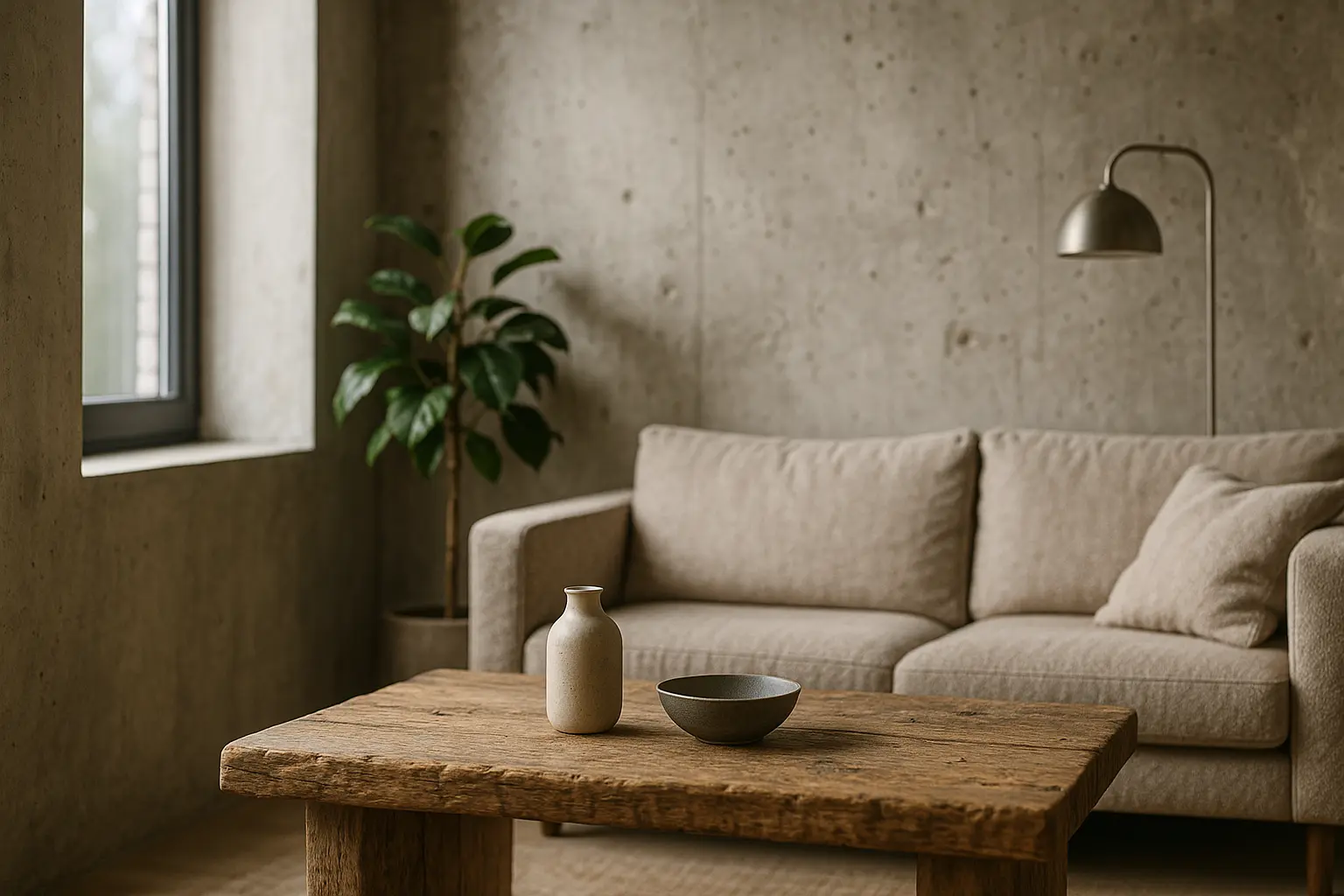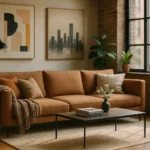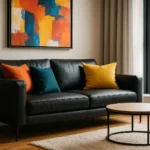In our world of sleek, polished surfaces and ultra-modern aesthetics, there’s a growing movement that celebrates the raw and unfinished. The texture of a weathered brick wall, the organic lines of natural wood, or the roughness of handwoven fabrics can add depth and character to any space. Decor enthusiasts and interior designers alike find themselves drawn to these elements, not only for their visual appeal but for the feel they bring into a room. Join me on this journey as we explore how these materials can transform a simple room into a sanctuary of style and substance.
The Allure of Raw Textures
Raw textures speak to our innate desire for authenticity. There’s something undeniably captivating about the way a brick wall, with its imperfect lines and variations, can hold a room’s attention. The tactile nature of these materials makes us yearn to reach out and touch, to connect with spaces in a more profound way.
These textures draw inspiration from the natural world, bringing the outside in and encouraging a sense of tranquility. They remind us of simpler times when the world wasn’t smoothed over with layers of artificiality. Instead, these textures invite us to embrace imperfections, highlighting the beauty in what is unrefined.
The integration of raw materials into interior design isn’t just about aesthetics. It’s about creating spaces that feel grounded and substantial, places where one can truly unwind. Imagine a living room adorned with the uneven surface of a brick wall, contrasted with smooth wooden beams overhead. This combination not only adds visual interest but also layers of texture that play with light and shadow, enhancing the room’s overall atmosphere.
Incorporating Textured Walls
The walls of a room are like blank canvases waiting to be brought to life. By incorporating textured elements, you can transform an ordinary space into something extraordinary. From exposed brick to reclaimed wood panels, these textures add dimension and story.
Brick walls: A timeless choice, exposed brick offers an industrial edge that is both trendy and timeless. Its rough surface invites the eye, providing a stark contrast to smoother furnishings and decor. Whether in a loft apartment or a cozy suburban dwelling, a brick wall can become the focal point of your design.
Reclaimed wood: Perfect for adding warmth and character, reclaimed wood can be used in various ways, from feature walls to accent details. Each piece of wood carries its own history, its unique knots and grain patterns telling tales of its past life.
Plaster and concrete finishes: These offer a modern, minimalist aesthetic that is both chic and understated. A plaster wall, with its slight imperfections and chalky finish, adds a subtle layer of texture to any room without overwhelming other design elements.
By thoughtfully integrating these materials, you’ll create a space that feels both intentional and inviting, offering a balance between rugged and refined.
Furnishing with Textured Elements
Textured furniture and decor can anchor your room, adding layers of intrigue and comfort. These pieces not only offer a tactile experience but also a visual one, adding depth to your design.
Rattan and wicker: These natural materials introduce a sense of calm and relaxation. Perfect for reading nooks or sunrooms, rattan and wicker pieces have an airy quality that complements both rustic and modern settings.
Handwoven textiles: Incorporating items like handwoven rugs or throws adds a layer of softness and approachability. These textiles often come in earthy tones and textures that resonate with the natural theme.
Raw-edged wood furniture: Tables and shelving with natural edges introduce organic shapes, enhancing the overall aesthetic. These pieces often become conversation starters, drawing attention to their unique craftsmanship.
When combined, these elements can transform a room, aiding in crafting a cohesive and inviting environment. Textured furniture pieces help blend indoor and outdoor living, fostering a sense of harmony and continuity.
The Psychology of Texture in Interior Design
Understanding the psychological impact of texture in interior design is key to creating spaces that don’t just look good but feel good too. Textures have the power to evoke emotions and set the tone for any environment.
Warmth and comfort: Rough and heavy textures, such as those found in brick or wood, can evoke warmth and coziness. These materials can make expansive spaces feel more intimate, perfect for homes that prioritize comfort and relaxation.
Balance and calmness: Smooth and subtle textures contribute to a peaceful atmosphere. Incorporating plaster or soft textiles can calm the senses, promoting relaxation and mental clarity.
Energy and stimulation: In contrast, vibrant and varied textures can energize a room, inspiring creativity and conversation. A clever mix of materials and finishes can inject life into otherwise static spaces.
By being mindful of the emotional cues these textures provide, one can design interiors that are not only visually striking but also emotionally enriching.
In a world that’s increasingly digital and detached, decorating with raw, unfinished textures offers a return to the tangible. It reminds us that beauty lies in the imperfect, the unrefined, and the authentic. By integrating these elements into our interior spaces, we create environments that are not only aesthetically pleasing but also deeply human.
Whether through the rugged charm of a brick wall, the inviting warmth of reclaimed wood, or the tactile allure of handwoven textiles, these textures transform rooms into reflections of our personal stories and connections to the natural world. So, as you embark on your design journey, consider the power of texture. Embrace it, and let your space tell its own story.
FAQ
What are some examples of raw, unfinished textures suitable for interior design?
Unfinished textures add a touch of authenticity and rustic charm. Examples include exposed brick walls, concrete floors, reclaimed wood, metal pipes, and natural stone surfaces.
How can unfinished textures be incorporated into a modern home?
Incorporating raw textures into a modern home involves balancing sleek elements with rugged materials. Consider using concrete countertops, metal pendant lights, or a reclaimed wood accent wall to contrast with contemporary furnishings.
What are the benefits of using unfinished textures in home decor?
Unfinished textures bring warmth, character, and an organic feel to spaces. They add depth, help create a unique aesthetic, and often require less maintenance than polished materials.
Are there any tips for maintaining surfaces with raw textures?
Maintaining raw textures involves regular dusting and sealing when necessary. For example, sealing concrete floors can prevent stains, while using a gentle cleaner can keep wood surfaces looking fresh.
Can unfinished textures be used in any room of the house?
Yes, raw textures can be used in any room. In the kitchen, exposed brick adds warmth; in the bathroom, stone tiles offer a spa-like feel; and in the living room, a metal-framed coffee table can provide an industrial touch.



